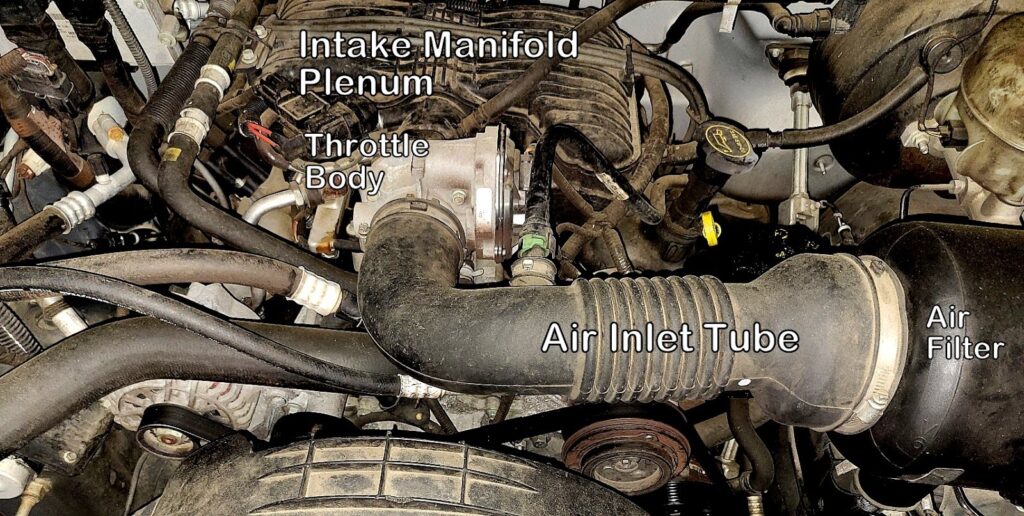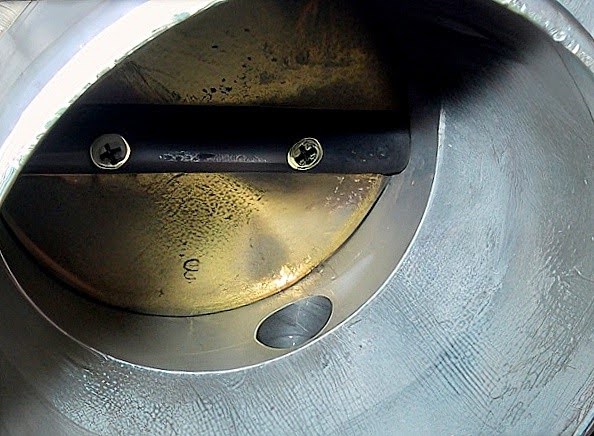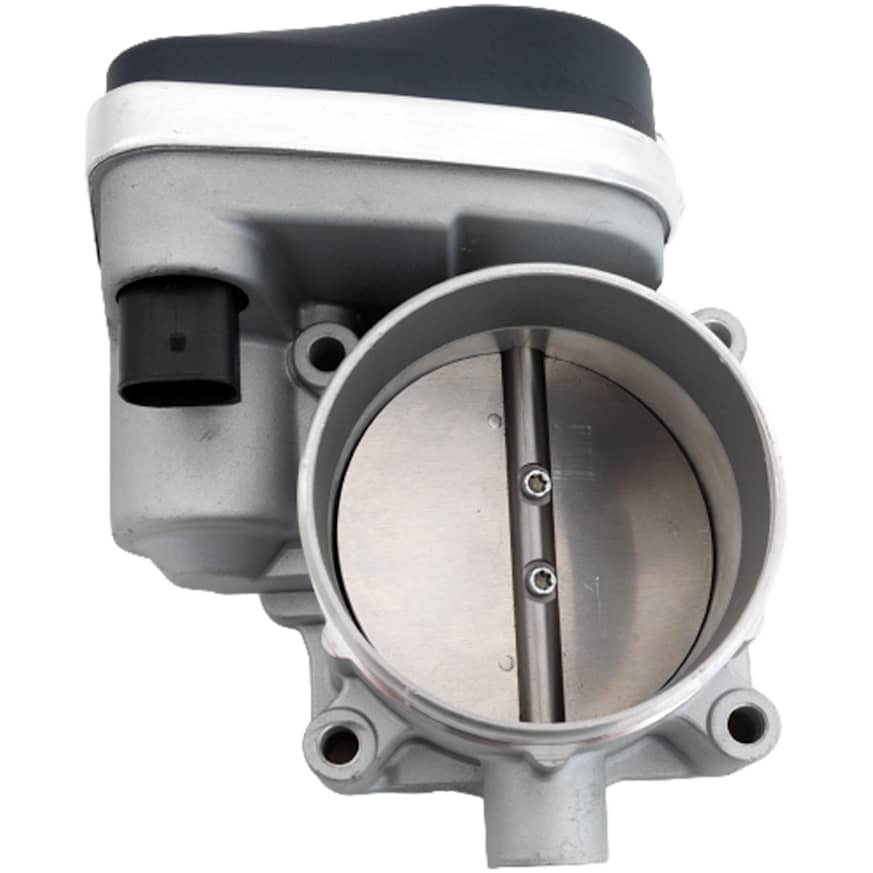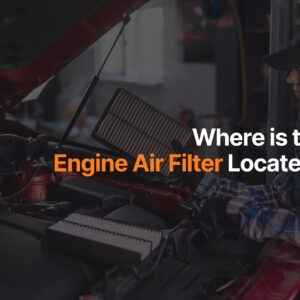The throttle assembly is where the air enters the engine, and is mounted on the intake manifold where the air inlet tube connects to the engine.
The throttle body is a housing with a plate mounted on a swiveling axis so that when the axis rotates, the angle of the plate changes to allow air to pass.

The throttle is responsible for controlling the amount of air that enters the engine, allowing it to regulate and control engine speed and power. This is accomplished when the driver presses the accelerator pedal with their foot or when the cruise control is operating the throttle independently of the driver’s foot.
Diesel engines regulate fuel delivery rather than airflow for power and speed, so they won’t have a throttle plate except to facilitate EGR flow.
Older vehicles have throttle linkage or a cable that operates the throttle plates. Since the mid-2000s, most vehicles have had an electronic throttle body driven by a motor and gears internal to the throttle body housing along with redundant throttle plate position sensors for PCM input and feedback.
This kind of throttle is controlled by the PCM, which takes input from redundant accelerator pedal sensors.
Tips to Access the Throttle

Typically, you’ll only need to access the throttle body if you need to disconnect it to remove the intake manifold or if you need to clean the throttle plate.
But if the throttle body is electronic, don’t move the throttle plate by hand, because you can destroy the throttle body mechanism on some throttle bodies that way.
Just leave the throttle body on the engine, have an assistant turn on the key without starting the engine, and have him hold the accelerator pedal all the way down.
Use a toothbrush and spray to clean the throttle body plate and its surrounding housing but do not put your fingers in an electronic throttle body under any circumstances. If your finger is in there and the helper releases the throttle, the motor will drive the throttle body closed and severely injure your fingers.

Any information provided on this Website is for informational purposes only and is not intended to replace consultation with a professional mechanic. The accuracy and timeliness of the information may change from the time of publication.
































